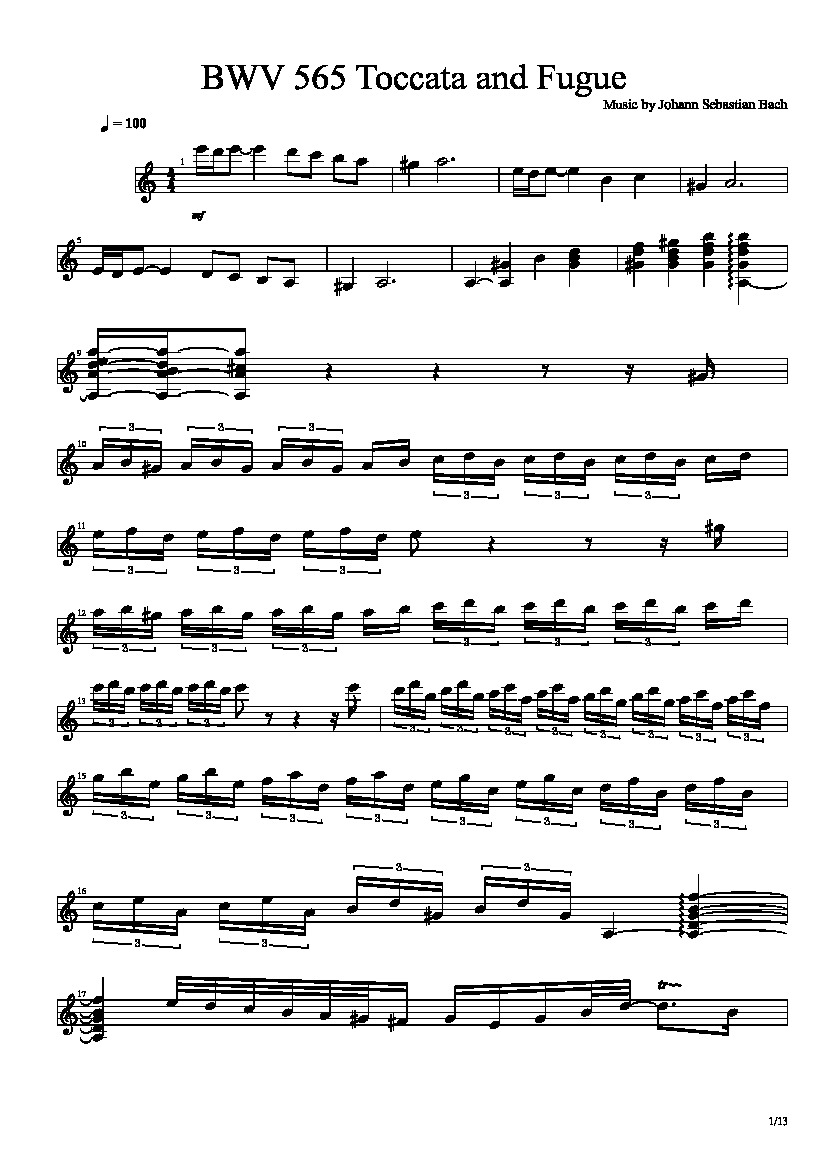

Smith, who mime to the prerecorded tracks by Stokowski and the Philadelphia Orchestra. The animation segues back into the live-action footage of Stokowski as the piece concludes, setting the precedent for the rest of the musical numbers.Īlthough the Philadelphia Orchestra recorded the music for the film (excepting The Sorcerer's Apprentice), they do not appear onscreen the orchestra used onscreen in the film is made up of local Los Angeles musicians and Disney studio employees like James Macdonald and Paul J. Toccata and Fugue was inspired primarily by the work of German abstract animator Oskar Fischinger, who worked for a brief time on this segment. The number segues into an abstract animation piece-a first for the Disney studio-set in time to the music. The first few parts of the piece are played in each of the three sound channels (first the right, then the left, then the middle, then all of them) as a demonstration of Fantasound. Toccata And Fugue In D Minor By Johann Sebastian Bach (1685-1750) - organ solo single Sheet Music for Organ - Buy print music HL.50276040 Sheet Music Plus. The first third of the Toccata and Fugue is in live-action, and features an orchestra playing the piece, illuminated by abstract light patterns set in time to the music and backed by stylized (and superimposed) shadows. Stokowski appears and begins conducting the first strains of his own orchestration of the Toccata and Fugue in D Minor, by Johann Sebastian Bach (originally written for solo organ). Master of ceremonies Deems Taylor arrives and delivers an introduction to the film. Musicians are seen ascending the stand, taking their places, and tuning their instruments. It was only in the last 100 years or so that people have started looking back to Bach's music again and noticing how brilliant he was.Fantasia begins immediately (there are no opening credits or logos of any sort) with the curtains being opened to reveal an orchestra stand. Bach's music was suddenly very old fashioned and people stopped playing it. After Bach died, Mozart and Beethoven came along and music changed again forever. Bach's music was extremely complex and clever and often made up of lots of melodies weaving in and out of each other. People didn't just listen to music in a concert, they used it for worship or entertainment. Everything was different in the Baroque period many of the orchestral instruments we see today hadn't been invented yet, harpsichords were the most popular keyboard instrument and music always had a purpose. During this time composers wrote a lot and were paid little but Bach was one of the absolute best. Johann Sebastian Bach BORN: 1685 / DIED: 1750 / NATIONALITY: Germanīach wrote music during a time that we now call the Baroque Period, when composers were servants who worked for wealthy families providing music for weekly church ceremonies, for parties and for special occasions. It's not only Bach's most famous fugue, but also the most famous fugue by any composer, ever. Listen out for: The majesty, drama and relentless rhythm the piece is known for. It's written in two sections: the Toccata (meaning "to touch") - is a sort of free-form introduction, involving lots of fast scales and arpeggios (broken chords) the second part - the Fugue - is characterised by complex overlapping repetitions of a main theme played alongside different counter-melodies. In a lesser composer's hands, this might have sounded a bit mathematical, mechanical and boring – but not with Bach! This is especially evident in the Toccata and Fugue in D minor. He wrote brilliant tunes for the instruments and voices available to him at the time, but stuck to the rule-book of 18th Century music. What makes Bach unique is his absolute mastery of the strict compositional techniques of the day. For most of his career, Bach worked as an organist and choirmaster at various churches throughout Germany.

Johann Sebastian Bach was a German musician and composer who wrote throughout the 18th Century.


 0 kommentar(er)
0 kommentar(er)
